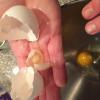October 21, 2016 - 19:54

Vivian O’Bannon
Jody Cohen
Emily Balch Seminar: Changing Our Story
October 21, 2016
Gender: The Worst Trait to Inherit
People always say that I got my father’s nose, mother’s face, father’s anger, mother’s softness. I inherited many traits from my parents, physical and mental. Some traits are not seen as traits, but I got my mother’s body. I inherited the body of a female, and this is a body that I am comfortable with. However, not all people feel this way about their body. Many people are born into a body that does not align societally with their preferred gender. Today, in the 21st century, transgenderism and gender fluidity are more accepted than they were 50 years ago. In the 1960’s, it was more difficult to identify as gender fluid or transgender. Suzan-Lori Parks attempts to illustrate this particular struggle in Getting Mother’s Body. The title itself can be interpreted in many ways – to me, the title signifies the associations attached to one’s born sex, specifically the struggles and confines of gender. This interpretation resonates most with me because it connects very well with the inter and intrapersonal struggles of the androgynous character, Dill Smiles. Throughout the novel, the characters refer to Dill with the gender that they feel is most appropriate, since Dill never genders themselves outright. This discrepancy creates issues for Dill and their interpersonal relationships, but it is hard for Dill to identify as a specific gender, because transgenderism was a taboo subject in the 1960’s, especially in rural areas. Through Dill’s story, Suzan-Lori Parks’ title “Getting Mother’s Body” highlights the constrictive nature of being born into a body with attached gender stereotypes.
When someone does not identify with the gender identity that matches their biological sex, they face many challenges, not just with others but within themselves. Dill was born female, but passed as a man for most of their life. Willa Mae and Dill were together for a while before Willa Mae found out that Dill was not a man, and the only way she found out was by touching Dill and realizing that Dill did not have a penis. Because Dill was not born male, the relationship did not work out with Willa Mae, even though she perceived Dill to be male for the first part of their relationship. She was unfaithful and slept with men while still living with Dill. This shows the type of challenges Dill faces pertaining to their love life; although things may have worked out with Willa Mae, their relationship failed because Willa Mae expected Dill to be biologically male.
Getting Mother’s Body not only points out the issues of living in a body that doesn’t match one’s preferred gender; it points out the issues of living as a woman with female sex organs. In media, at school, in the workplace, on the street; women view and suffer from constant sexualization of their body. There are many struggles associated with having female anatomy; women are sexualized and often used as objects for men’s sexual pleasure. The opening chapter of Parks’ novel perfectly models this issue: Billy and Snipes’ have sex in the back of his car, but Billy’s narrative portrays the sex in a disturbing way, not pleasurable for both parties involved. The second line of the book shows the way that Billy interprets sex and the way that, unfortunately, a lot of people interpret sex. Parks exposes the issue that heterosexual intercourse is often one-sided. When Billy narrates in the beginning of the chapter, she tells the audience that “Snipes doesn’t like to talk when he’s in the middle of it” (Parks 3). Instead of referring to their consensual sex as a collaborative act, she refers to it as Snipes having sex, that’s all. The way that he just “pulls himself out of [her] and gets out the car” when he is finished perfectly describes this issue, that sex is only pleasure for men and that women’s bodies are the vessel that takes them there. The female body is nothing but a means of pleasing men, and Billy’s attitude in the first chapter reveals how she blindly accepts this.
Towards the end of the story, Parks writes an interaction between Dill and Laz to exemplify another objectification of women for sexual pleasure. After Laz and Dill’s sister had sex, Dill asks Laz about it. He tells Dill that “she was a lot better than [his] hand” (Parks 227), furthering the belief that women’s sexual existence is solely for men’s pleasure. Laz compares Billy to his hand, not even acknowledging her validity as a human being with her own wants and needs. To Laz, Billy is just a body. This encounter illustrates one final struggle of “getting mother’s body” – that the female body is often disrespected, objectified, and divested.
Getting Mother’s Body shows the struggles of being female in different aspects, like being female with cisgender identity, and being female without identifying as such. The novel elaborates on the different challenges that people face because of their female sex, and how it relates to gender and sexuality. Two problems that arise because of gender - objectification of women and societal constructs of gender - have changed since the 1960’s, but we still face many of the same problems regarding women’s sexuality and the way that men view women as sexual objects.
Parks, Suzan-Lori. Getting Mother’s Body: A Novel. New York: Random House, 2003. Print.
